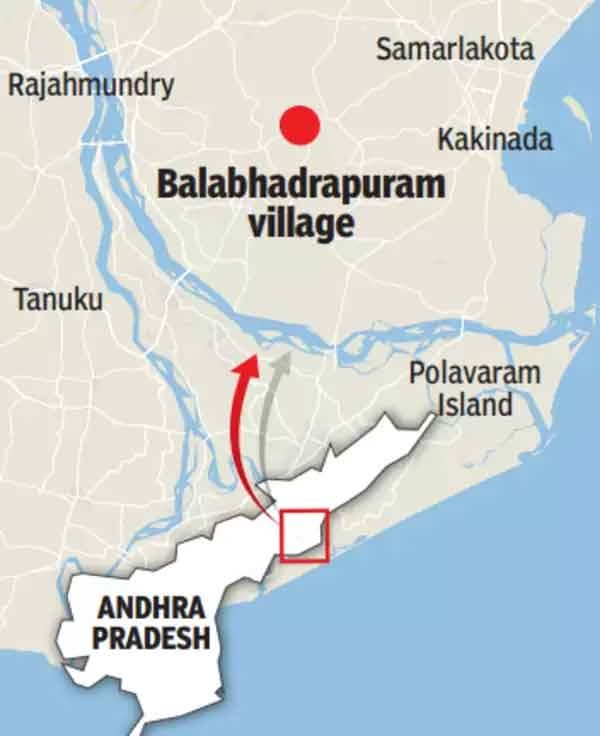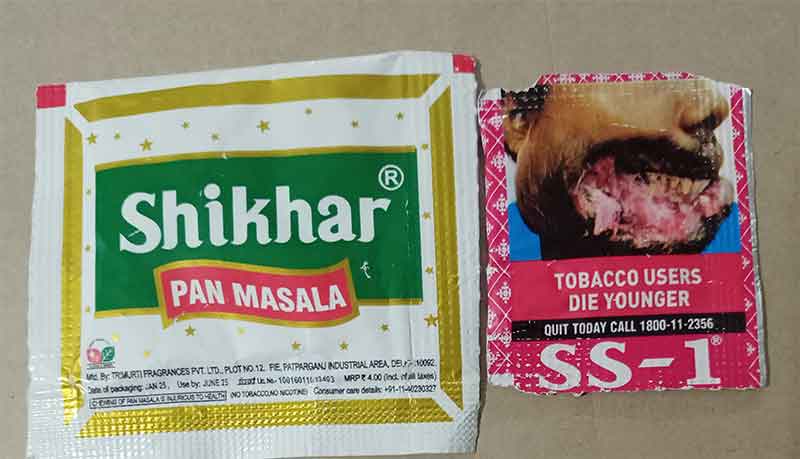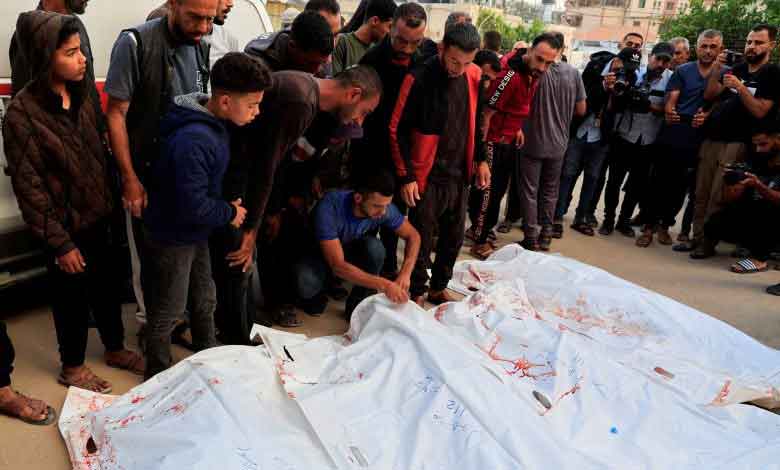
Balabhadrapuram, in East Godavari dt (Andhra Pradesh-AP, population about 16,000)) has been in regular news for cancer incidence, it is reported. Local MLA Sri Nallamilli Ramakrishna Reddy had raised it in the AP Assembly on March 20. There were reports linking it with the pesticide industry working there. KPR Group that is involved in the problem has many industrial units in this and neighboring villages. This article briefly discusses the problem, and raises the role educational institutions can and ought to play.
The district collector said the incidence is within normal range. A Report of March 24th says a door-to-door survey by 31 teams of doctors covering about 8800 individuals detected 38 cancer cases. Another predicts it to touch 100. Earlier, one March 22 report says air and water quality would be tested by the pollution control board (AP PCB).
Scientists for People, a Hyderabad-based nonprofit group of scientists, had written to Andhra Pradesh Pollution Control Board (APPCB) chairman P. Krishnaiah on Sunday (March 30, 2025), demanding an urgent and thorough investigation into the Balabhadrapuram cancer cases. Led by Dr K Babu Rao, and including this author, the scientists expressed concern about the alarmingly high rate of incidence of cancer in the village and criticized the state health minister and district collector that the latter tried to understate the issue by saying the incidence rate falls within the national average. 38 cases of cancer in a village is not a small number. Cancer cases in India are 1 per thousand population. In AP it is 8 cases per 10,000 poulation. The incidence rate in this village is, in fact, more than four times the Andhra Pradesh State average and significantly higher than the national average. They expressed concern regarding the composition of the official investigation teams, which lack the necessary expertise, including in cancer epidemiology. Dr Babu Rao, former CSIR scientist of IICT at Hyderabad, pointed out the Chlor-Alkali factory used PFOA (Perfluorooctanoic Acid) which is carcinogenic. And the factory is very close to the village. (The Hindu published a report on 31st March 2025, citing the scientists.)
KPR Fertilizers was established decades ago and the same was taken over by Grasim Industries (Of Aditya Birla group) five years ago. Many kinds of fertilizers and pesticides are being manufactured in that factory. This problem is not confined to this village but is spreading to the adjacent villages like Balavaram, Donthamooru and Biccavolu.
One report, also in media, gave a break-up of gender, age, type of cancer. People say women are more in the victims. Teams from govt. hospitals at Anaparti (what facilities do they have in this village is a question) and experts from the renowned Rangaraya Medical College, Kakinada (established in 1958) made door-to-door surveys. While there is no single method to detect cancer, clinical data indicative only could be collected. Without further tests, they also cannot confirm if it is cancer and a specific cancer.
Rural water supply (RWS) department of AP analysed water from about 70 bore wells and except the one near the industries gate, all others showed no contamination. However, the Reports are not reliable given the way the department works at lower levels, more so when political pressures are at play.
There is a tug of war- some say it is all a political drama. But there are deaths, and people are worried. Scientists for People demand a deep investigation.
In the melee, no one is talking about Biccavolu, a big (population about 20,000) neighboring village, just 5.7 km from Balabhadrapuram, where KPR is running another unit of this Agro-chemical industry. An entire street in Biccavolu is reported by locals to be occupied by KPR group.
Some point out to a number of poultry units. Burying the dead chicken irregularly is causing ground water pollution. Some say the dead poultry birds are fed to the prawn farms and also added to chicken feed.
Questions neglected are: Krishna and Godavari are districts with most intensive farming: Whether produced here or elsewhere, what is the pesticide consumption in these districts ? Can the pesticides be contained in the village where it is produced?
One earlier experience needs to be recalled : Nagarjuna Agrichem in Srikakulam dt contaminated the groundwater of about six villages around and had undertaken to supply drinking water by tankers daily. While that may be enough for humans to drink, will it cover water for cooking food? No contaminant except microbes can be removed by boiling. Cooking food with contaminated water will worsen the situation. The industry producing neuro-toxic pesticides by mandate gets its staff tested annually for acetyl cholinesterase ..and the senior doctor of the industry rewrites all reports.( the doctor was old and may not be there now. Mouths of a few village muscle men in the village could be shut with currency.)
Several accidents in chemical industries in AP AND TS appeared in media and vanished. Some unqualified members sat on committees and reports suiting the industry must have been generated. How the accident happened, whose fault takes front seat in these reports, not what happened to the workers and people living around. The effects on the poor people living around have been neglected. They are accustomed to living there, putting up with the stench and noise as seen around the ethanol units in Godavari district and elsewhere in Telangana.
Nagarjuna Agrichem one fine morning was in the celebrating mood. Because China decided not to produce a certain insecticide, and they saw an opportunity. I am sure the under-qualified staff running the plant do not understand why China closed down its unit.
Role of educational institutions
No IIT and no university chemical engineering department and chemistry department that are well equipped takes interest. None of them have chemical industry disaster management, mitigation and prevention in the curriculum. I did contact IIT Kanpur and engineering colleges and universities around the industry where the accident occurred when accidents occurred. Every one has been too busy to look into these problems. Our education sadly is only to fill our stomachs and not to protect our people and the environment.
The chemical and drug industry around Vaisakha, Godavari districts has been employing bachelor degree holders…and the principal of a PG college in the area said, “sir, students register for masters (PG) but are seen only during examination. He added another sad comment: Within a year of joining the industry, their lungs and digestive systems are spoiled. Vice- president of a big pharma company says “please visit our plant in a rural area… yes smaller units cannot handle their effluents”.
Andhra and Telangana, a decade back, boasted of a large number of good post graduate organic and analytical chemistry departments bustling with young students. No nearby state had so many post graduate colleges with organic and analytical chemistries, essential to support the chemical industry. A great symbiosis. Most students would answer “industry” if you ask which job he/she would take up after masters. Now computers is more fetching, they feel. Students in different subjects including pharmacy in private and Govt. Universities run the glittering show with no real teaching, I had observed as a former professor. We all wondered why (politics?) only managers of one university are arrested for omissions and commissions while all other private universities are no different.
Every PG college is capable of testing water, air and soil for contaminants. It helps learning as also the society. But they are not engaged in that practical activity. We destroyed them. And those institutions still breathing do not mind when the people around die.
Which institute bothered itself when Karnataka and Ludhiana turned into GMO cities and there after into cancer cities?
Do we recruit teachers and researchers testing their aptitude? How can a society with 70% unqualified vice-chancellors perform well? With directors of national labs with no pride of heading a national lab – directors with no qualifications head them – what sort of system we are building?
I am not merely narrating the defects. I am specifying solutions, identifying our failures and hope that we educated individuals and the governments wake up.
Is it necessary that the Govt. make it mandatory for all students of biomedical institutes including medical, nursing, dental, pharmacy, microbiology, biochemistry etc to carry out at least six months of project work, with the common people, in the field-concerned ? Can we not do it voluntarily, without prodding? Teachers and students should design the studies as per their syllabus…not wait till they come to 4th year..start as early as possible, join a team of seniors..and by the time they come to final year, they would have done substantial work, yielding good results and good publications. The projects could concern health, hygiene, education, preventive medical practices, data generation on efficacy of home remedies, ayurveda and homeopathy. They can give useful inputs to the govt agencies.
The students of agriculture, chemistry can also do their relevant work! Introducing kitchen garden/terrace garden/vertical garden/ community garden to improve the nutrition levels of people can be among them.
Students of chemistry could regularly test pollution levels of air, water and soil; testing for pesticide residues in grain, pulses; adulterants in oils, prohibited preservatives, colours and flavouring agents.
As a scientist and academic adviser for universities and industry and having carried out several of the activities mentioned above, I am sure such facilities and capabilities are available in our society. Only motivation and guidance may be required for students and teachers. In due course, it would become a habit. Keeping the academics closer to the life of common citizens and making innovation relevant to our society and life possible. Some examples are given below:
We studied occupational poisoning of lead acid battery mechanics and their families. The students in a rural post graduate college were excited to see the blue line on the front teeth of a man chronically poisoned by lead! Microbiology students identified the pathogenic contamination of the commonly used well in the village!
High school students had measured the BMI of all students. 90 pharmacy students made door to door surveys of three endemic fluorosis villages in Pavagada district, Karnataka. They remained in the nearby town for three days! Even students from the Gulf and African nations, who did not know the local language, participated by collecting samples, photography, and facilitating co-students.
40 students and three teachers spent ten days in hot May month in the tribal hamlets of Srisailam, surveyed 32 habitations where tigers and bears are seen often. One of the teachers, a young lady (leader of the team) left her two year old son at home with the grandmother! The students at the end of the survey trip, expressed that the experience was more than any certificate of participation. They endured the hardship with great contentment. Yes, the teacher must be involved and must have the vision. The pharmacy team came up with a great observation: the anaemia in this locality is due to G6 PD deficiency unlike Thalassemia in the Araku area. It is a genetic condition wherein G6PD enzyme is deficient, and leads to hemolytic anemia.
In Mylavaram, very close to the capital city of AP, (60 students including 30 girls ) students and teachers of a corporate Pharmacy college went to ST (lambada) tandas, spent (number) days in the rural area, with humble accommodation and facilities. They surveyed (number ) families, their education, health, nutrition etc. They processed data, and went back for 7 days more, and did follow-up work.
All the above were made possible in the recent years ( up to 2022) at a time when we see poor schooling and training, particularly practical work that involves interactions with people. They were done voluntarily when no curriculum insisted on that. They enrich soft skills of students, make them more employable, even while serving the society and people. Students enjoyed it all and felt beneficial to their life and career too.
Subscribe to Our Newsletter
Get the latest CounterCurrents updates delivered straight to your inbox.
Brief Introduction to author Dr M Bapuji
An activist who was a Retd. Senior Scientist, CSIR 1973-2002 (30 yrs), in Odisha, with vast experience across disciplines. Born 1948, he had a Ph.D. in organic chemistry, he guided six to Ph.D in varied cross disciplinary subjects, and was associated with various universities and an IIT. Has published 70 papers, holds 6 Patents, transferred 9 technologies to industry, helped stop imports of a group of chemicals.
He discovered a 80km-long ridge reef off Odisha coast, reported about 140 sponges, corals etc for the first time from this reef. Established lab for microbes associated with sedentary fauna. Studied over 1200 microbes from this resource.
After voluntary retirement from CSIR, he worked in AP, as Director of a rural PG centre at G.Mamidada for five years; senior academic consultant for Nannaya University (Rajahmandry) and for The University of Trans-Disciplinary Health Sciences and Technology (TDU, formerly FRLHT), Bangalore.
In recent past he was a Visiting Professor and Research Adviser, Acharya BM Reddy College of Pharmacy, Bangalore. Worked on fluorosis voluntarily with Fluorosis Mitigation Research and Resource Center (as Scientific Adviser, FMRRC, Hubli, Karnataka, founded by Dr. KS Sharma). Later he worked in KLUniversity, and guided teachers and students. Working on improvement of tribal schools, education, labs, faculty in W.Godavari dt(AP). Currently based at Hyderabad. Has contributed articles to countercurrents.org, on fluorosis, some science-related topics etc.
Email ID : [email protected]















































